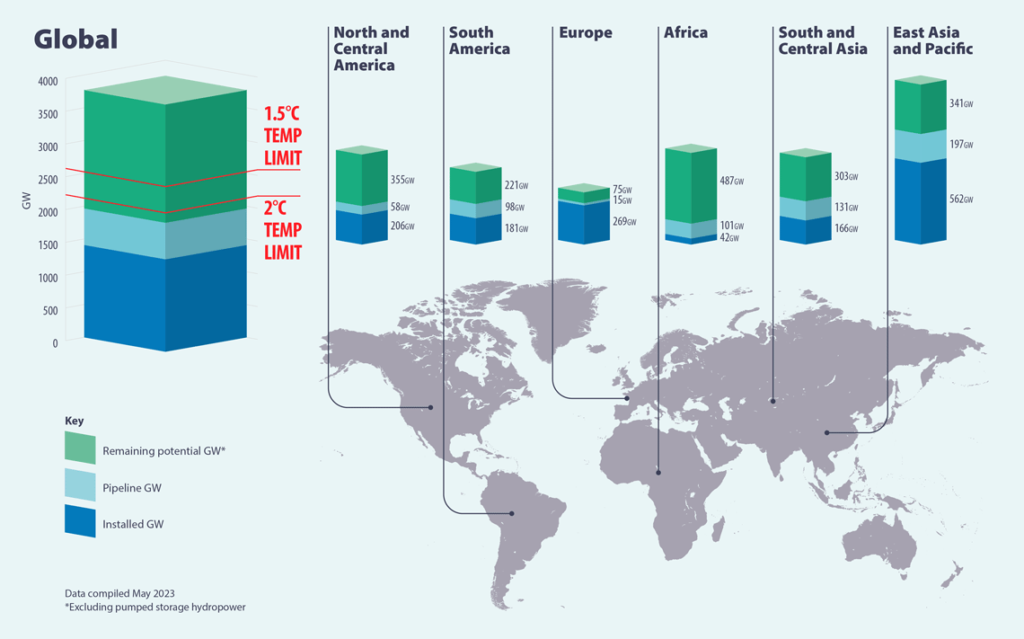The latest World Hydropower Outlook, published today by the International Hydropower Association, shows that in 2023, hydropower capacity grew by 13.5GW to 1,412GW, of which pumped storage hydropower (PSH) grew by 6.5GW to 182GW. Overall, there is an average downward trend for hydropower which risks energy systems missing global targets for decarbonisation by 2050.
With increasing global interest in hydropower, action is needed from governments to convert interest into new projects. Up to 2030 about 25GW per year is required for hydropower to contribute to the ‘tripling up’ objective agreed at COP28. After that, if net zero is to be achieved, delivery needs to more than double and this rate needs to be sustained until 2050.
IHA’s assessment of the “big 100” pipeline of projects under development indicates that this acceleration is within reach for the early years of the next decade, but more action is needed to raise this rate of delivery further. Ultimately, the world needs more hydropower projects, done better and delivered faster.

- China, Brazil, US, Canada and Russia were the top five countries for installed hydropower capacity in 2023.
- Almost half new installed capacity in 2023 was in China.
- Europe is focused on modernisation of existing hydropower and pumped storage hydropower development as part of its target of 42.5% renewable energy by 2030.
- In Africa, hydropower already provides 40% of sub-Saharan Africa’s power but 90% of the continent’s potential has yet to be tapped.
- In South America, hydropower contributes 45% of South America’s electricity supply and over 13GW of projects are in the pipeline.
- In Central America, hydropower accounts for over 30% of electricity.
- In the US, there is huge potential for modernisation with roughly half of the non-federal fleet up for relicensing by 2035.
Hydropower is the backbone to a reliable energy and water system. As well as providing electricity, it provides storage, flexibility, reliability to support solar/wind, access to clean water, irrigation, and drought and flood control.
Whether we like it or not, more droughts and floods due to climate change will mean an increased need to invest in water infrastructure such as dams and reservoirs. Where possible these should be powered.”
This report shows how investments are lagging behind and development has slowed down in the past decade. On the positive side, there is a healthier pipeline and pumped storage hydropower is experiencing a renaissance. Its potential to shore up the energy grid is increasingly recognised.
Eddie Rich, CEO IHA
The more variable power that is developed through solar and wind, the more hydropower will be required to provide balance and flexibility when the wind doesn’t blow, and the sun doesn’t shine.
Governments need to plan for long term energy needs, including a balanced mix of renewable energy, for both generation and long duration storage. Investors need long term certainty for their investment given the high initial capital costs of building large infrastructure projects. Moore’s Law does not apply to digging holes. Hydro projects take time, more than it takes to build solar farms, and so we need to move much faster to deliver the hydropower we need.
Malcolm Turnbull, IHA President
Download the report here.